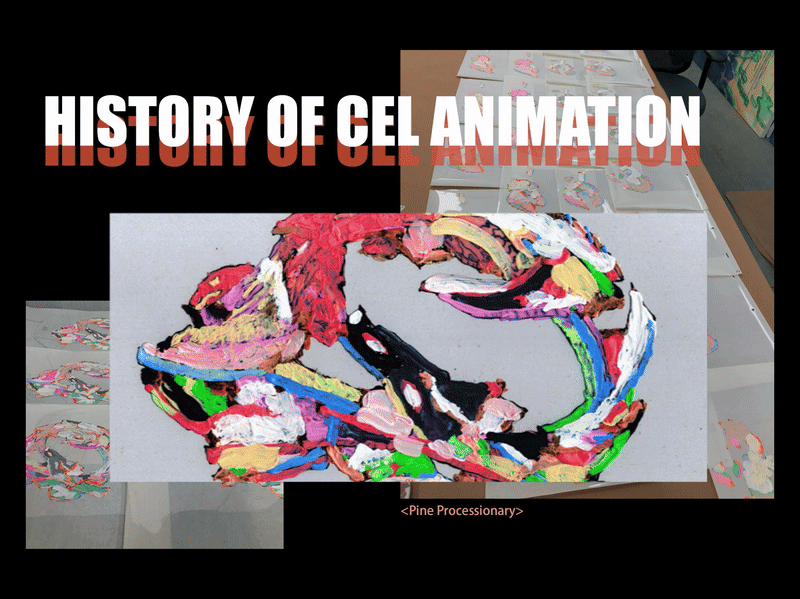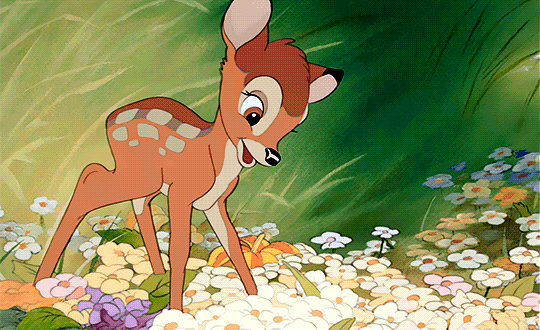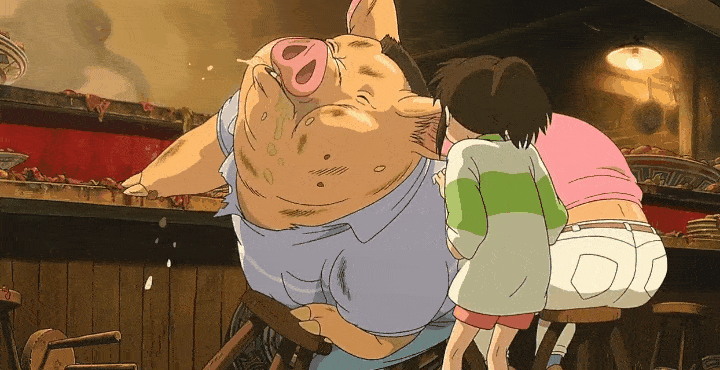Zhihan Ran

Introduction
Cel Animation is a form of traditional 2D animation.”Cel” is simplized from “Celluloid”, which is a transparent acetate sheet that was used as a film material in early silent movies and later discovered for use in animation.
This kind of material allows animator to do character line drawing on paper and then transfer the line drawing onto the cellophane sheet (or trace it directly in ink).

Early Age of Slow Exploration
The cel animation process was first invented by Earl Hurd and John Bray in 1915. They are noted for creating and producing the silent Bobby Bumps animated short subject series which is the first cel animation .

During the year of 1910-1920 , however, black-and-white films developed slowly. At this time, Animation was still in the experimental and exploratory stage. Faced with high patent and material costs, cel animation technology had not yet been popularized.
Fleischer Studios, a premier producer of animated cartoons for theaters, generally divides animation into two layers: character animation and backgrounds, in order to save costs. This greatly limits the composition of the shots and the dynamics of the characters.

Golden age of rapid development
In 1928, Disney’s “Steamboat Willie” made talkies a huge success and pushed the animation industry forward.
Disney had been using multi-layer cel animation since the 1930s and introduced the Multiplane Camera in 1937.
the Multiplane Camera allowed for a more natural depth of field in animation. The principle of filming involves stacking multiple panes of clear glass vertically, with a different background or object drawn on each layer, and the camera filming from the top down. It allows different depths of scenery to create a three-dimensional feeling and depth of field in the picture, making the animation look more real and vivid.
In the same year, Disney released Snow White and the Seven Dwarfs, which became the world’s first feature-length animated movie produced with celluloid technology, proving the viability and commercial value of celluloid animation.

Bambi (1942) further developed this technique to make forest scenes and light effects more realistic.

The Last Splendor
The Age of Television Animation
American animation companies (such as Disney) pursued “full animation” with high frame rates, but at a high cost. After World War II, Japan, which was still in the midst of the war, adopted limited animation techniques, i.e., reducing the number of frames, reusing celluloid, and utilizing camera movement instead of animation frames, which greatly reduced production costs and made celluloid animation the mainstay of television animation.

In the late 1990s and early 2000s, with the revolution of computer technology and the rise of digital animation techniques (e.g., computer graphics, CG animation), the time-consuming and labor-intensive traditional hand-painting mode of celluloid was gradually replaced by digital painting.
1984: Disney and Pixar collaborate to develop CAPS, with the goal of replacing celluloid coloring and compositing with computer technology.
1990: Rescue Rangers 2: An Australian Adventure becomes the first film to use CAPS for the entire film, showcasing richer colors and special effects.
1990s: CAPS becomes the core technology for Disney animation, used in classics such as Beauty and the Beast, Aladdin, and The Lion King.

Age of Decline
In the 2000s, with the popularity of digital drawing tools like Adobe Photoshop, Flash, and Tvpaint Animation, animators can draw, color, and composite characters and scenes directly on the computer. Digital painting techniques (especially 2D digital painting) gradually replaced traditional celluloid animation techniques.
In 2002, Spirited Away was Ghibli’s last animated film to use celluloid on a large scale, after which Japanese animation basically shifted to digital production.

Totally, Celluloid technology was an integral part of the development of 2D animation, and its technical logic and artistic style profoundly influenced 2D animation in the 19th and 20th centuries.
As technology progressed, the traditional celluloid technique was gradually phased out by new computer animation technologies, but the celluloid technique’s idea of separating layers of elements in order to minimize error tolerance and increase production efficiency is still used in today’s software.
Today, we still refer to this type of coloring, which clearly separates line art, color, and background, as celluloid coloring. Even though today’s animation has gone digital, these artistic styles still shape the visual language of animation.
Leave a Reply